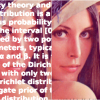Free Online Productivity Tools
i2Speak
i2Symbol
i2OCR
iTex2Img
iWeb2Print
iWeb2Shot
i2Type
iPdf2Split
iPdf2Merge
i2Bopomofo
i2Arabic
i2Style
i2Image
i2PDF
iLatex2Rtf
Sci2ools
CVPR
2009
IEEE
2009
IEEE
Super-Resolution via Recapture and Bayesian Effect Modeling
This paper presents Bayesian edge inference (BEI), a
single-frame super-resolution method explicitly grounded in
Bayesian inference that addresses issues common to existing
methods. Though the best give excellent results at modest
magnification factors, they suffer from gradient stepping
and boundary coherence problems by factors of 4x. Central
to BEI is a causal framework that allows image capture
and recapture to be modeled differently, a principled
way of undoing downsampling blur, and a technique for
incorporating Markov random field potentials arbitrarily
into Bayesian networks. Besides addressing gradient and
boundary issues, BEI is shown to be competitive with existing
methods on published correctness measures. The model
and framework are shown to generalize to other reconstruction
tasks by demonstrating BEI’s effectiveness at CCD demosaicing
and inpainting with only trivial changes.
| Added | 09 May 2009 |
| Updated | 10 Dec 2009 |
| Type | Conference |
| Year | 2009 |
| Where | CVPR |
| Authors | Bryan S. Morse, Dan Ventura, Kevin D. Seppi, Neil Toronto |
Comments (0)

